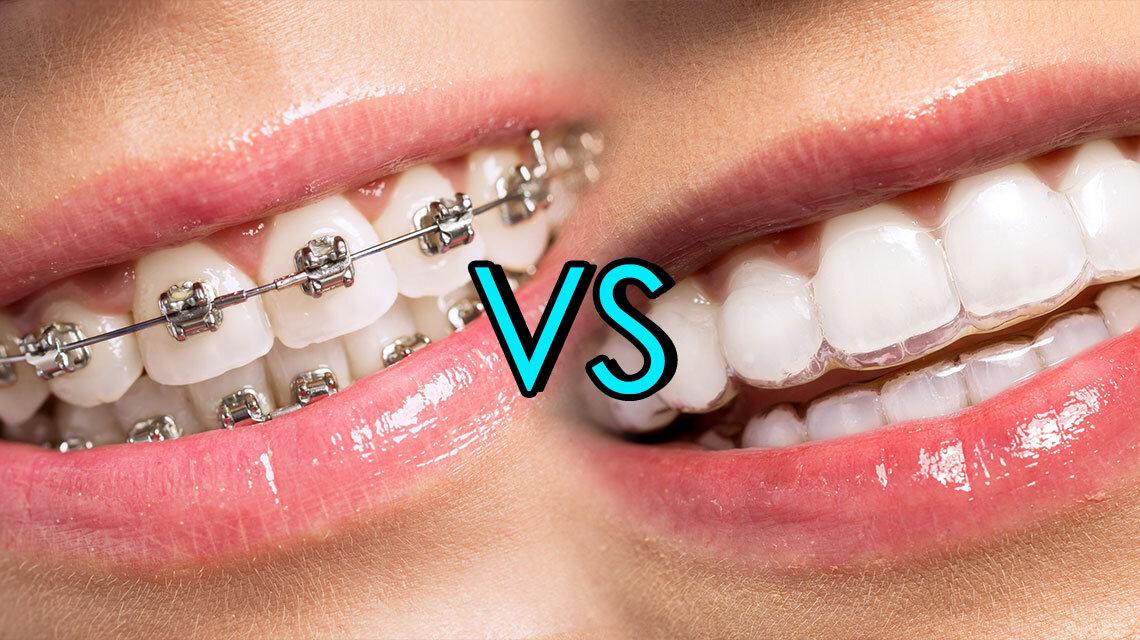
Invisalign vs. Braces – Unveiling the Pros and Cons
The search for a radiant, confident smile has led you to the crossroads of choosing between two prominent orthodontic treatments – Invisalign and traditional braces.
Both methods effectively align your teeth, but navigating their distinct advantages and drawbacks is crucial for making an informed decision.
If you are in Yules, FL, visit the orthodontist for braces and Invisalign at Onshore Orthodontics. The husband and wife work collaboratively on every treatment plan, which means you get evaluated by two doctors.
The treatment plan is created with a broad perspective to ensure you achieve the best results. Let’s understand each approach’s pros and cons so you can choose the path that best suits your smile journey.
Invisalign
Pros:
Discreetness: The clear aligners blend seamlessly with your smile, which makes the treatment virtually invisible. It is ideal if you are image-conscious or seeking a more aesthetic approach.
Comfort: Unlike metal brackets and wires, Invisalign aligners are smooth and removable. So, it is a more comfy option if you are prone to mouth sores or irritation.
Dietary Freedom: Braces require avoiding hard, sticky or chewy food items. Aligners are removable aligners that allow you to enjoy your diet. It is also easy to clean after eating and maintain oral hygiene.
Improved Self-Esteem: The gradual progress towards a straighter smile is visible through the aligner. It boosts your confidence and self-esteem, motivating you throughout the treatment journey.
Cons:
Compliance: Successful treatment centres on wearing the aligner consistently (20-22 hours daily). Traditional braces might be a better fit if you struggle with maintaining a routine.
Cost: Invisalign treatment is more expensive than traditional braces. It will depend on the complexity of your case and the type you choose.
Suitability: If you need jaw surgery or extensive tooth movement, Invisalign may not be suitable.
Traditional Braces
Pros:
Effectiveness: Braces can handle complex orthodontic cases, including severe misalignments, overbites, underbites, and jaw discrepancies. So, it is a more versatile option.
Cost-Effectiveness: Traditional braces are generally less expensive than Invisalign, especially for complex cases.
Guaranteed Results: Orthodontists have decades of experience using braces, ensuring high predictability and success.
No Compliance Concerns: Braces are fixed to the teeth, eliminating non-compliance risks that can deter Invisalign treatment.
Cons:
Visibility: Metal braces are readily noticeable, so you may hesitate to go for or complete your orthodontic treatment.
Comfort: Braces can cause discomfort due to metal brackets and wires rubbing against the cheeks and lips. Mouth sores and irritation are also more common.
Dietary Restrictions: Certain foods like sticky candies or hard nuts can damage braces and wires so you will need dietary modifications.
Potential Damage: If your oral hygiene practice is poor, braces can sometimes damage teeth or gums.
Which to choose – Invisalign or Braces
Ultimately, the choice between Invisalign and braces revolves around your individual needs, preferences, and lifestyle.
Consider factors like:
Severity of Misalignment: Braces might be more suitable if you have a complex case.
Compliance: If you struggle with maintaining routines, braces offer a more assured approach.
Budget: Invisalign can be more expensive, so factor in treatment costs.
Discreetness: If invisibility is paramount, Invisalign reigns supreme.
Comfort: If comfort is a significant concern, Invisalign might be preferable.
Remember to consult a qualified orthodontist. They can assess your specific needs, recommend the most suitable option, and address any concerns you may have. With careful consideration and expert guidance, you can confidently choose an option to achieve a radiant smile.
